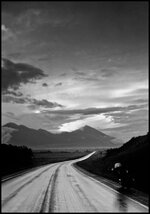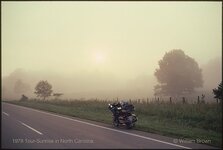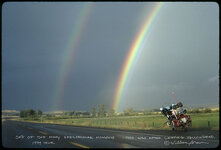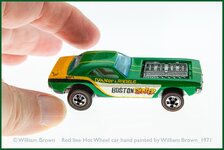Bill Brown
Well-Known Member

Several factors drove my beginning interest in photography and one of the main ones was my love of motorcycle touring. I wanted to document my personal adventures and since I was working at a professional photo lab a camera loaded with Kodachrome seemed to be the best way to accomplish this. This was the late 1970's and tour bikes had not yet become the expensive rides like present day. I paid $2200 for the basic Yamaha 750 2D shaft drive bike then began the process of outfitting it with everything I wanted. One of the saddlebags was devoted to holding all my camera kit which included a Canon FTb, a FD 50 mm lens and a Vivitar 28mm lens. Pretty basic. Then rolls of Kodachrome 64 to record it all with. My first tour was in 1978 from Dallas, Texas to Muncie, Indiana to visit family. I drove through North Carolina and got the attached image at sunrise with fog.

The main b&w photo was shot in Wyoming during my 1979 tour. The road appeared as if it was a silver ribbon winding it's way into the mountains. The original color image was nice but doing a b&w conversion better created what I saw in my mind as I drove that day. I titled it "Riding the silver ribbon". These tours and several others launched my now lifelong enjoyment of photography. What got you started?



